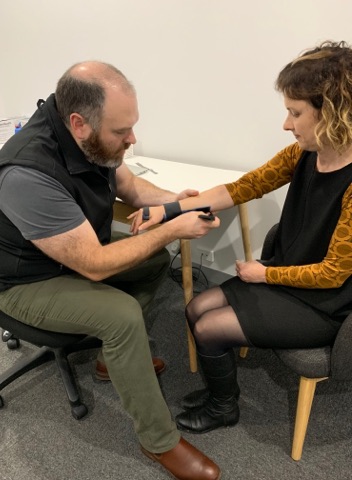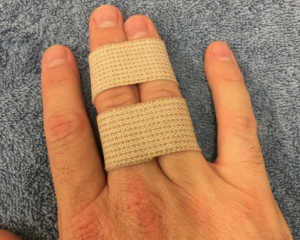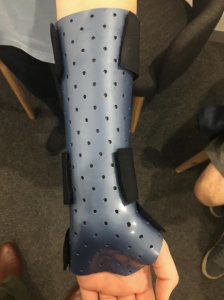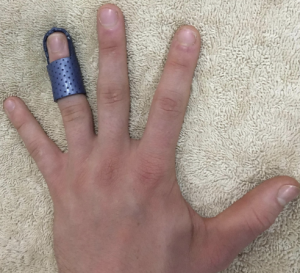29 May Hand Injuries

By James Thomas
Anyone who has played sports, particularly ball sports such as football and netball, knows that injuries involving the fingers, hands and wrists are common. In fact, they account for up to 25% of all sports related injuries.
While many are simple injuries that can be managed with rest and protective taping, delay in the diagnosis and management of more complicated injuries can potentially have significant impacts on the function of the hand, in both work and sporting pursuits. The intricate relationship between different tendons, muscles, ligaments and bones in the hands, means that injuries can easily go undetected, and ensuring that a thorough assessment is done, including any relevant imaging such as x-ray or ultrasound, is important to ensure the correct diagnosis is reached, and treatment is commenced.
If you sustain a hand injury, early management is in line with other soft tissue injuries. Rest, ice, compression and elevation help to minimise the swelling and bruising that can happen immediately following an injury. This can assist with the diagnosis, however can also help a faster recovery.

Protecting an injured finger from further injury is usually achieved with taping. Taping usually aims to protect and offload the injured structure. The most common finger taping technique is buddy taping. This involves taping the injured finger to one next to it, so it has the support of the uninjured finger.Following an injury, if you experience severe pain or swelling, numbness, coldness or grayness over the injured area, obvious deformity of the area, a clicking, shifting or grating sensation when moving the injured joint, bleeding that doesn’t stop quickly, or anything else that you’re concerned about, then it’s important to have the injury quickly assessed by a medical professional.

Early and accurate assessment of hand injuries can help prevent complications such as deformity, reduced range of motion, and loss of grip strength. Physiotherapy management will usually consist of exercises to restore the movement and strength, as well as tendon glide through the fingers and hand. Manual techniques such as massage or joint mobilisation might also be appropriate. If the injury requires protection, or a period of immobilisation, then a Physiotherapist can make a custom splint, made from a plastic which is heated and moulded, called thermoplastic.

If you have sustained a hand injury, or have any questions about this topic, then please contact us at Ovens Valley Physio and Pilates.



